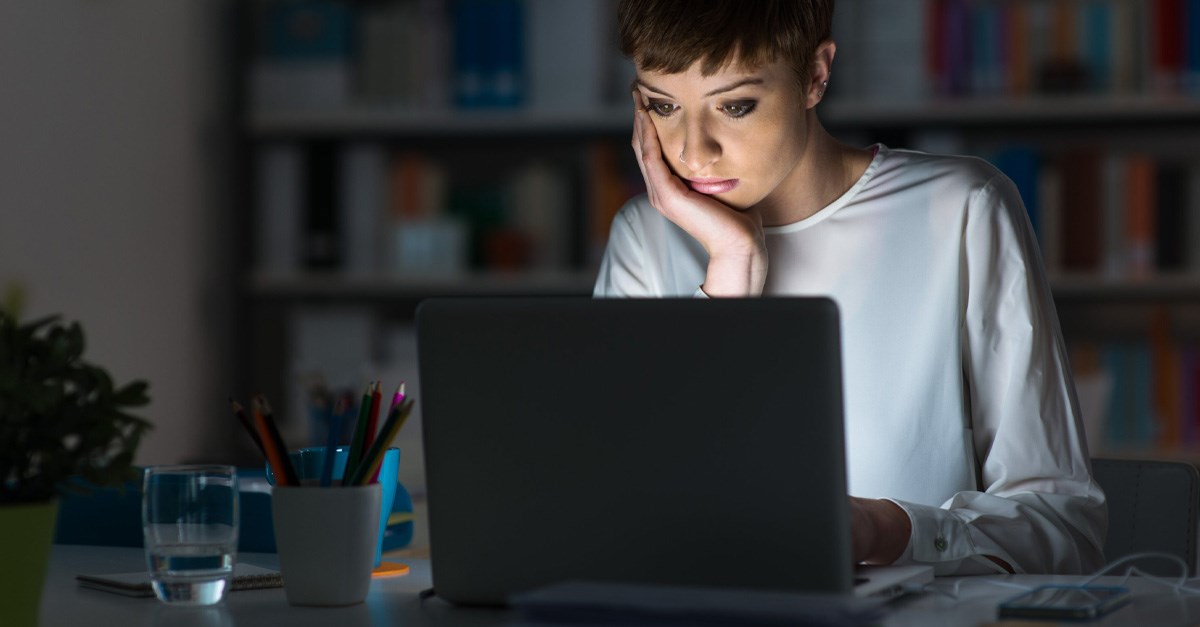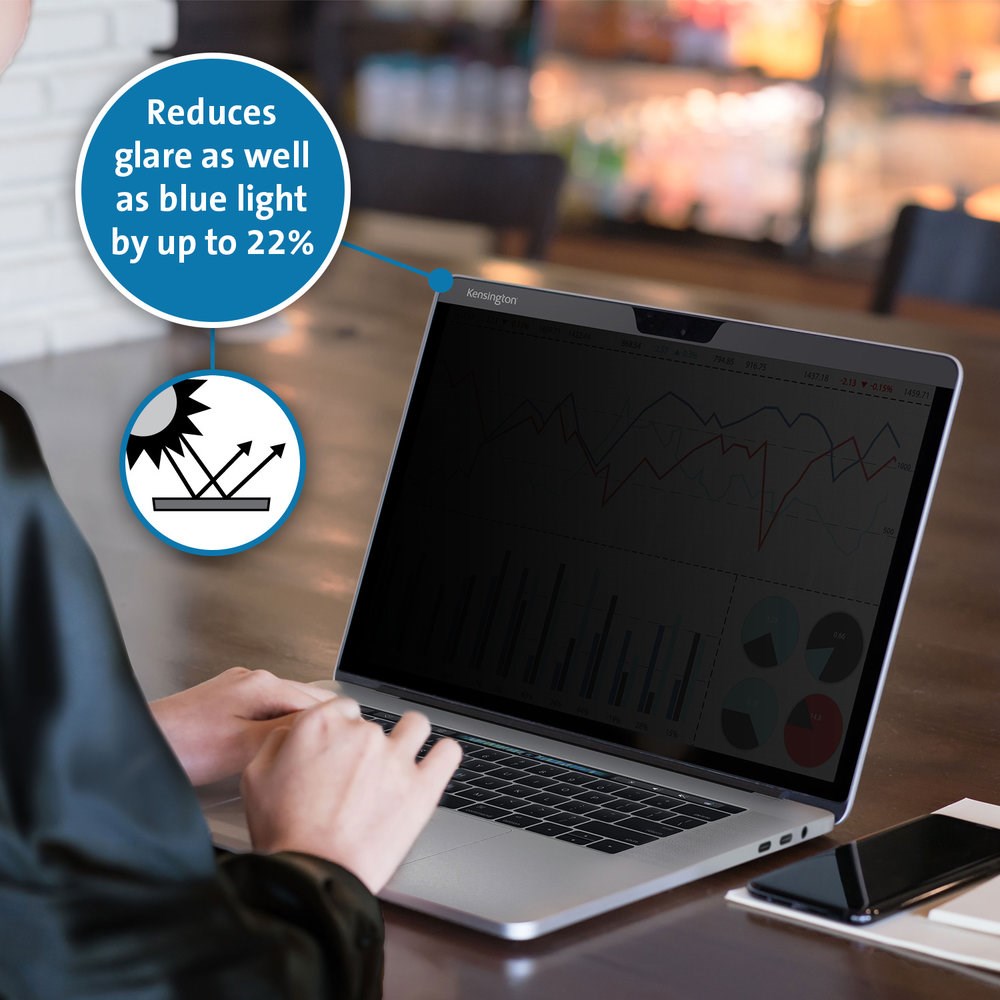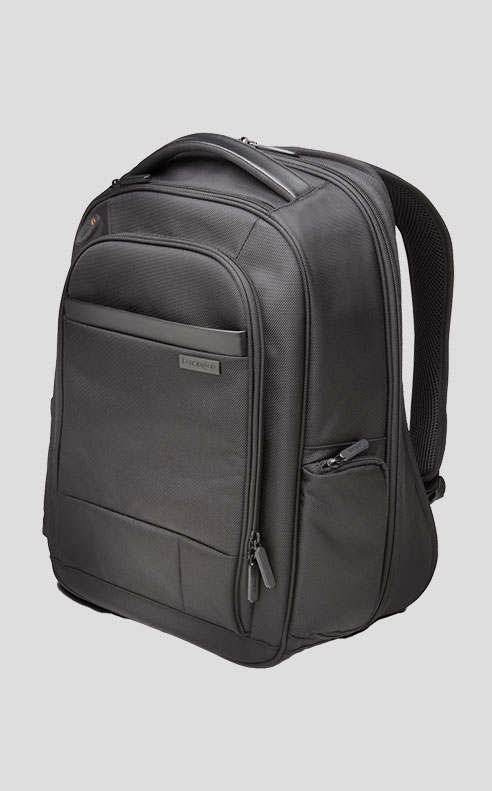
To protect against blue light from your computer screen:
- Adjust Your Screen Settings
- Use a Blue Light Screen Filter
- Use the 20-20-20 Rule
- Consider Blue Light Glasses
Do you find yourself struck with a headache at the end of every workday? Blue light from your computer screen may be to blame.
Electronic devices emit blue light, leading to eye strain, migraines, and more. We’re taking a closer look at what it is, why it affects us, and how you can minimize your daily dose of blue light to just the right amounts.
What’s the Deal with Blue Light?
You’ve probably heard many times that working at a computer all day can give you headaches and harm your eyesight, but did you know exactly why that happens? Computer screens, like the screens of other electronics, emit blue light.
Blue light is the highest energy color of the light spectrum that we can see. It has very short wavelengths, meaning it produces much higher amounts of energy than other colors of visible light. Due to its high energy emissions, blue light can singularly penetrate our cornea and lens of the retina. Since the sun is a natural source of it, our bodies have evolved to use the presence of blue light to gauge whether it’s time to sleep or wake.
We need blue light but in the right amounts. Research by the CDC shows that too little blue light can prevent our body from fully waking – a problem common in certain professions, such as mine workers. Yet, when we get too much of it, whether from the sun or the computer screen, research shows that this can cause physical damage and hormonal imbalances, such as melatonin underproduction.
Most electronics emit large amounts of blue light compared to other colors because it allows the closest approximation of color on screen compared to the real world. Professionals who work in front of computers every day are bathed in blue light, receiving a significantly greater amount than they might otherwise from the sun.
People routinely exposed to significant amounts of blue light, such as computer workers, frequently report:
- Headaches related to eye strain
- Sleep deprivation
- Vision loss
- Circadian rhythm disruptions
How to Reduce Your Exposure to Blue Light
Office workers around the world spend around 1,700 hours each year in front of computer screens, and that number won’t decrease. Some 90 percent of professionals in the workplace will need computer skills by 2025, reflecting the trend of companies adopting digital processes to carry out their vital business functions.
That means we’re all expected to get plenty of blue light throughout our day thanks to the numerous devices we handle at work – in addition to what we already get from the sun. Make sure you’re getting just the right amount by reducing what you absorb from your screens. Here are four strategies to help you do that.
1. Adjust Your Screen Settings
Did you know that your computer comes with blue light reduction settings for your screen? These settings adjust your screen light to a warmer tone, easing the strain on your eyes, especially if you’re working at night or in a dark room. Here’s how you do it on the five most common operating systems out there:
- For Windows 10: Click on the Start button, then type “Night Light.” Choose the option presented in search and follow the instructions.
- For Mac OS: Choose the Apple menu. Select System Preferences, then Displays. “Night Shift” is the fourth option.
- For Android: Tap the Settings gear in your top menu and navigate to Display. You should see a “Night Light” option on the list. (On some phones, it might be called “Comfort View.”)
- For iOS: Open your Settings, then navigate to Display & Brightness. You’ll see a “Night Shift” option. On some iPhones, this is turned on by default from sunset to sunrise. If it is, you may have noticed your phone screen adopting an orange hue in the evenings.
- For Chrome OS: Open your Settings and find the Displays section. You should see a “Night Light” section with a color temperature and schedule feature.
2. Use a Blue Light Screen Filter
Screen filters serve multiple useful purposes. Many are privacy-oriented, reducing the angles at which your screen is visible. That’s pretty great if you’re working in public but don’t want anyone watching you work over your shoulder.
Others filter blue light, reducing the amount of blue light that reaches your eyes without changing the color of the screen. Many, like our laptop privacy screens, do both.

Some research suggests filters can mitigate macular degeneration, but more evidence is needed for a definitive claim. Nonetheless, you might find blue light filtering privacy screens helpful if your job requires you to spend long hours – or if you’re working from home during non-traditional workday hours looking at a screen.
3. Use the 20-20-20 Rule
Focusing on text that’s a foot or two away from you for hours at a time can strain your eyes. The American Optometric Association recommends computer users to follow the 20-20-20 rule throughout the day. It’s simple:
Every 20 minutes, take 20 seconds to look at a specific object that’s at least 20 feet away. Not only does it give your eyes a break, but it also helps you reset your focus.
You can even use that 20 seconds to take a quick stretch.
4. Consider Blue Light Glasses
Blue light glasses function just like our blue light privacy filter screens. Available without a prescription, they prevent your eyes from absorbing all that blue light – though most versions don’t dim your vision like regular sunglasses.
Blue light blocking glasses are a good idea if you use multiple screens throughout the day (or evening), or don’t have a dedicated computer at work. With a single pair of glasses, you’re protected from blue light, whatever its source. (Disclaimer: Since glasses are a step beyond tools like screen filters, consider checking with your doctor to learn if blue light glasses are right for you.)
Keep the Blues Away with Solutions from Kensington
Blue light isn’t a bad thing on its own, but many computer professionals get entirely too much of it. Our bodies use blue light from the sun to balance hormones and keep us on a schedule. When we overload on it, it’s harder for our bodies to know when it’s time to go to sleep. Additionally, blue light is associated with eye strain, macular degeneration, and migraines.
Setting your workstation up to be comfortable for you from head to toe is incredibly important to your wellbeing and productivity. Whether it’s positioning your monitor at eye level, adopting your most natural mouse and keyboard posture, or stabilizing yourself with a footrest, make sure you’re considering all aspects of ergonomics. That includes not just what you’re doing, but also how you’re doing it – and how you’re viewing it. We’ve got the tools to help.
Check out our ergonomics and wellness accessories to improve workspace comfort.
